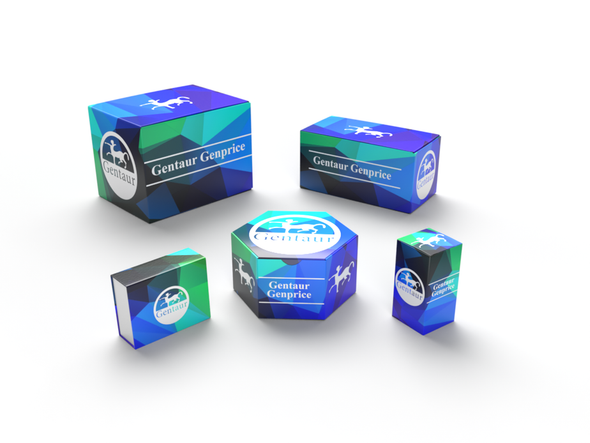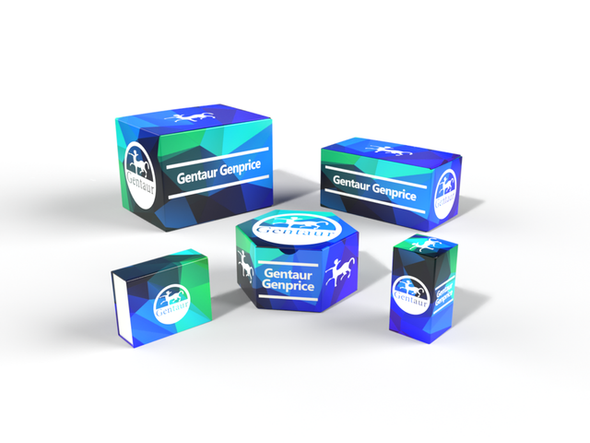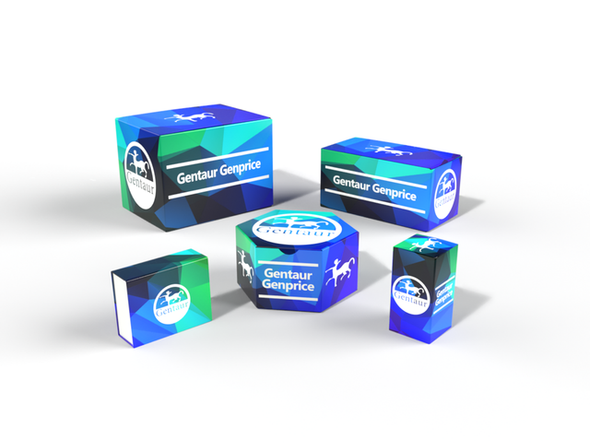749
Mouse Sorbitol dehydrogenase (SDH) ELISA Kit | KTE70404
- SKU:
- 749-KTE70404
- Availability:
- Usually ships in 5 working days
Description
Mouse Sorbitol dehydrogenase (SDH) ELISA Kit | KTE70404 | Gentaur UK, US & Europe Distribution
Application: This Mouse Sorbitol dehydrogenase (SDH) ELISA Kit employs a two-site sandwich ELISA to quantitate SORD in samples. An antibody specific for SORD has been pre-coated onto a microplate. Standards and samples are pipetted into the wells and anySORD present is bound by the immobilized antibody. After removing any unbound substances, a biotin-conjugated antibody specific for SORD is added to the wells. After washing, Streptavidin conjugated Horseradish Peroxidase (HRP) is added to the wells. Following a wash to remove any unbound avidin-enzyme reagent, a substrate solution is added to the wells and color develops in proportion to the amount of SORD bound in the initial step. The color development is stopped and the intensity of the color is measured.
Detection Method: Colorimetric
Conjugate: N/A
Sample Type: Cell culture supernatants#Serum#Plasma#Other biological fluids
Assay Type: Multiple steps standard sandwich ELISA assay with a working time of 3-5 hours. It depends on the experience of the operation person.
Kit Component: • Mouse Sorbitol dehydrogenase microplate
• Mouse Sorbitol dehydrogenase standard
• Mouse Sorbitol dehydrogenase detect antibody
• Streptavidin-HRP
• Standard diluent
• Assay buffer
• HRP substrate
• Stop solution
• Wash buffer
• Plate covers
Features & Benefits: Mouse Sorbitol dehydrogenase (SDH) ELISA Kit has high sensitivity and excellent specificity for detection of Mouse SORD. No significant cross-reactivity or interference between Mouse SORD and analogues was observed.
Calibration Range: Please inquire
Limit Of Detection: Please inquire
Usage Note: • Do not mix components from different kit lots or use reagents beyond the kit expiration date.
• Allow all reagents to warm to room temperature for at least 30 minutes before opening.
• Pre-rinse the pipet tip with reagent, use fresh pipet tips for each sample, standard and reagent to avoid contamination.
• Unused wells must be kept desiccated at 4 °C in the sealed bag provided.
• Mix Thoroughly is very important for the result. It is recommended using low frequency oscillator or slight hand shaking every 10 minutes.
• It is recommended that all samples and standards be assayed in duplicate or triplicate.
Storage Instruction: The unopened kit should be stored at 2 - 8°C. After opening, please store refer to protocols.
Shipping: Gel pack with blue ice.
Precaution The product listed herein is for research use only and is not intended for use in human or clinical diagnosis. Suggested applications of our products are not recommendations to use our products in violation of any patent or as a license. We cannot be responsible for patent infringements or other violations that may occur with the use of this product.
Background: Sorbitol dehydrogenase is an enzyme in carbohydrate metabolism converting sorbitol, the sugar alcohol form of glucose, into fructose. Together with aldose reductase, it provides a way for the body to produce fructose from glucose without using ATP. Sorbitol dehydrogenase uses NAD+ as a cofactor; its reaction is sorbitol + NAD+ --> fructose + NADH + H+. A zinc ion is also involved in catalysis. Organs that use it most frequently include the liver and seminal vesicle; it is found in all kinds of organisms from bacteria to humans. A secondary use is the metabolism of dietary sorbitol, though sorbitol is known not to be absorbed as well in the intestine as its related compounds glucose and fructose, and is usually found in quite small amounts in the diet (except when used as an artificial sweetener) .
Alternative Names: SORD; SORD1;
Search name: SORD; SORD1;
Tag: SORD






